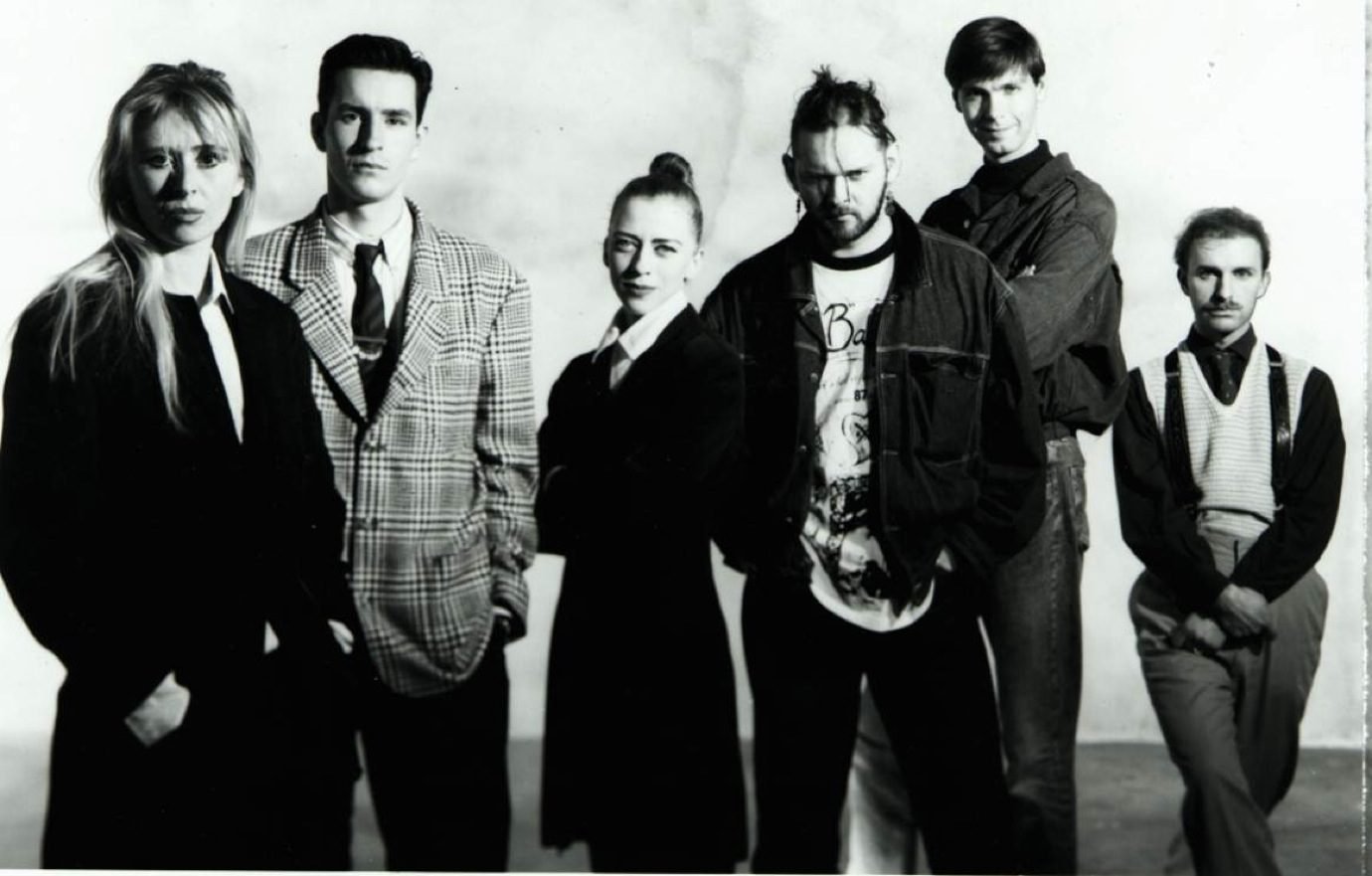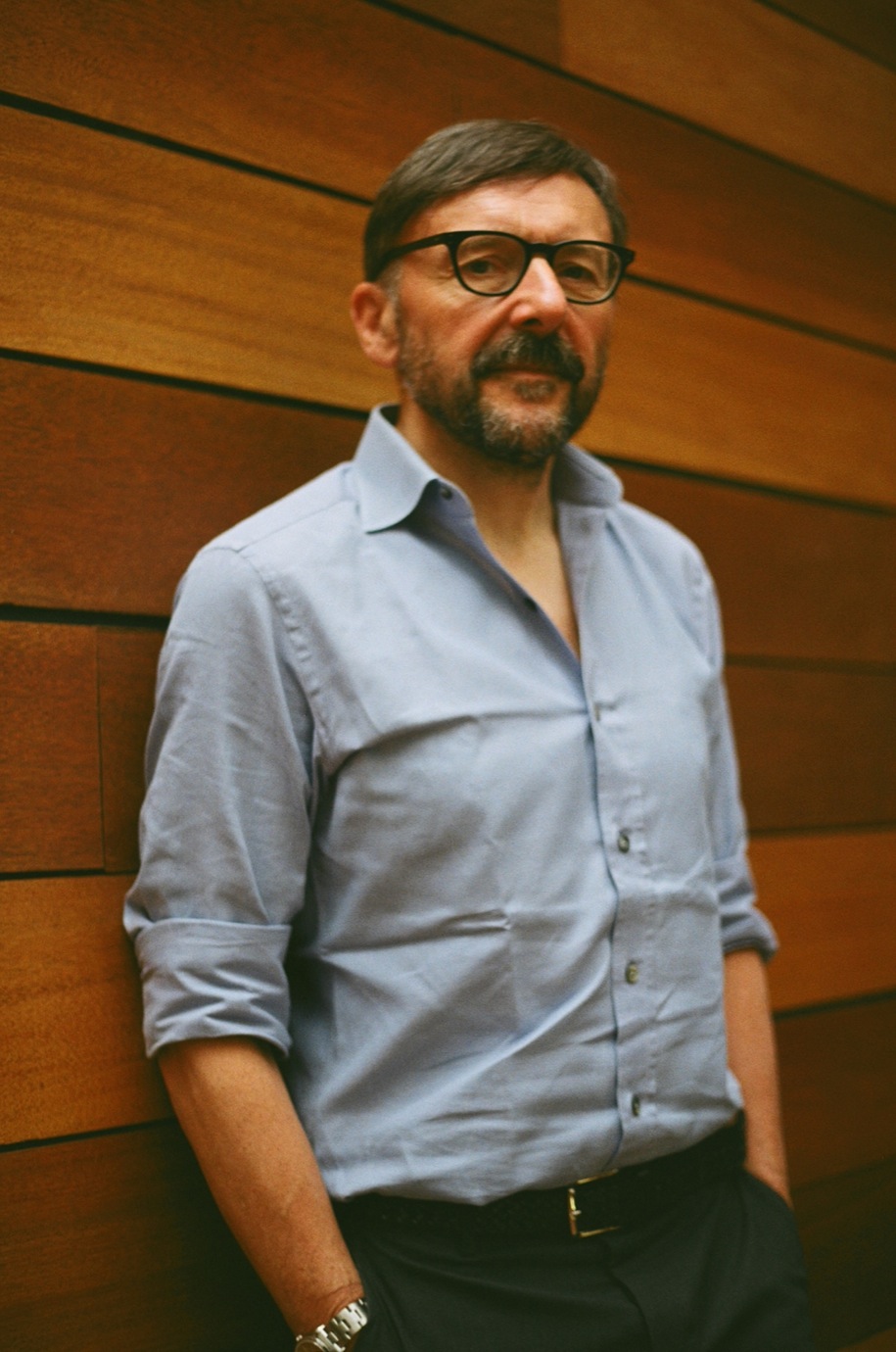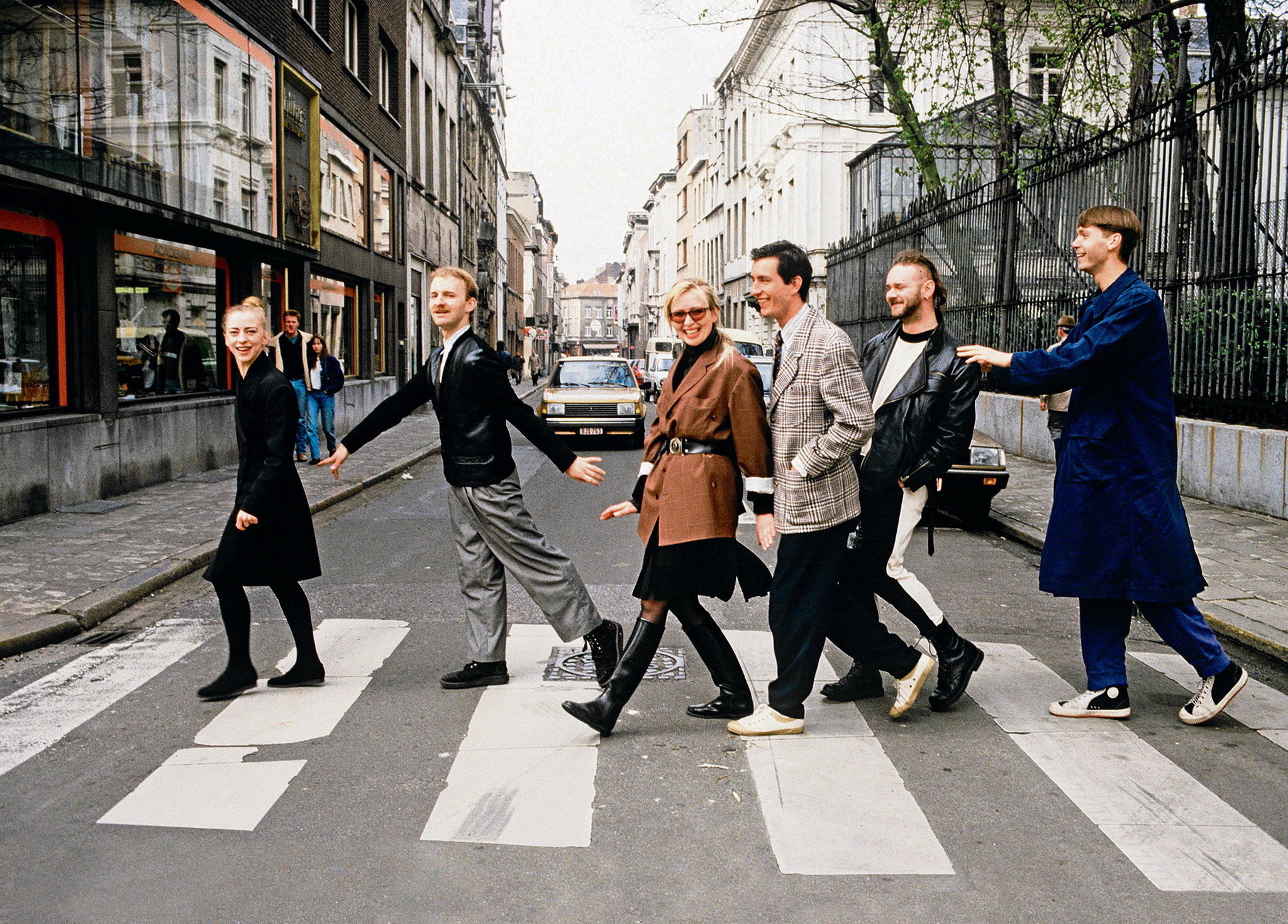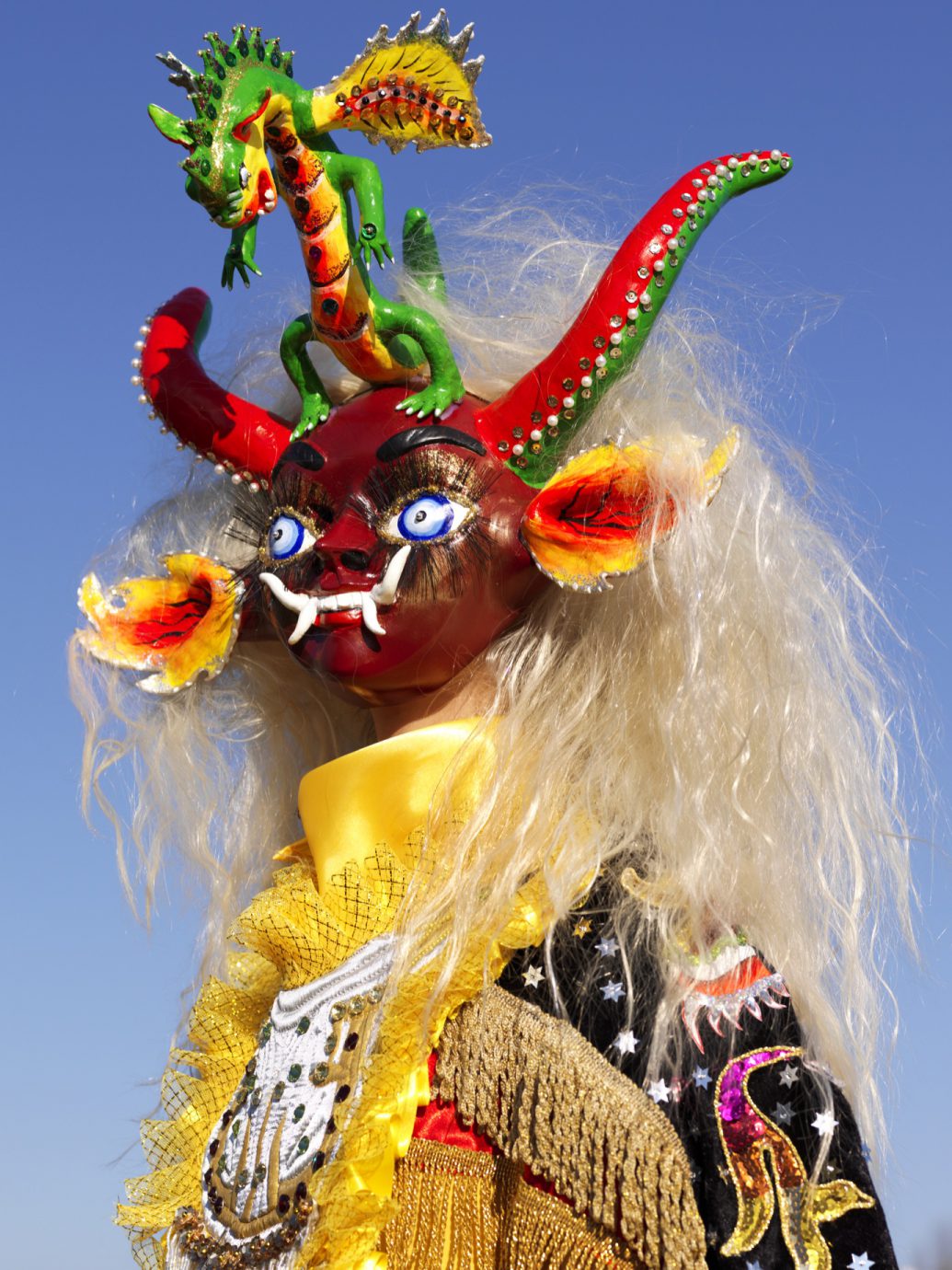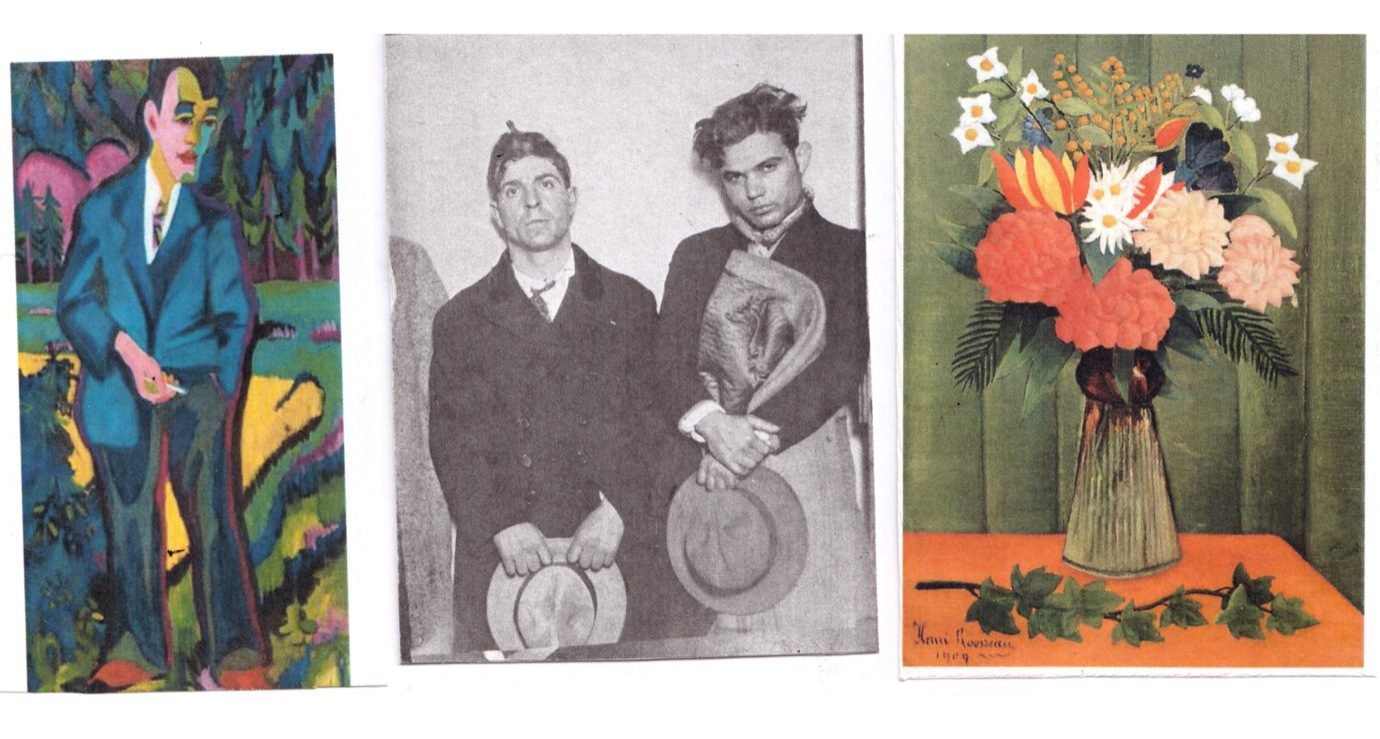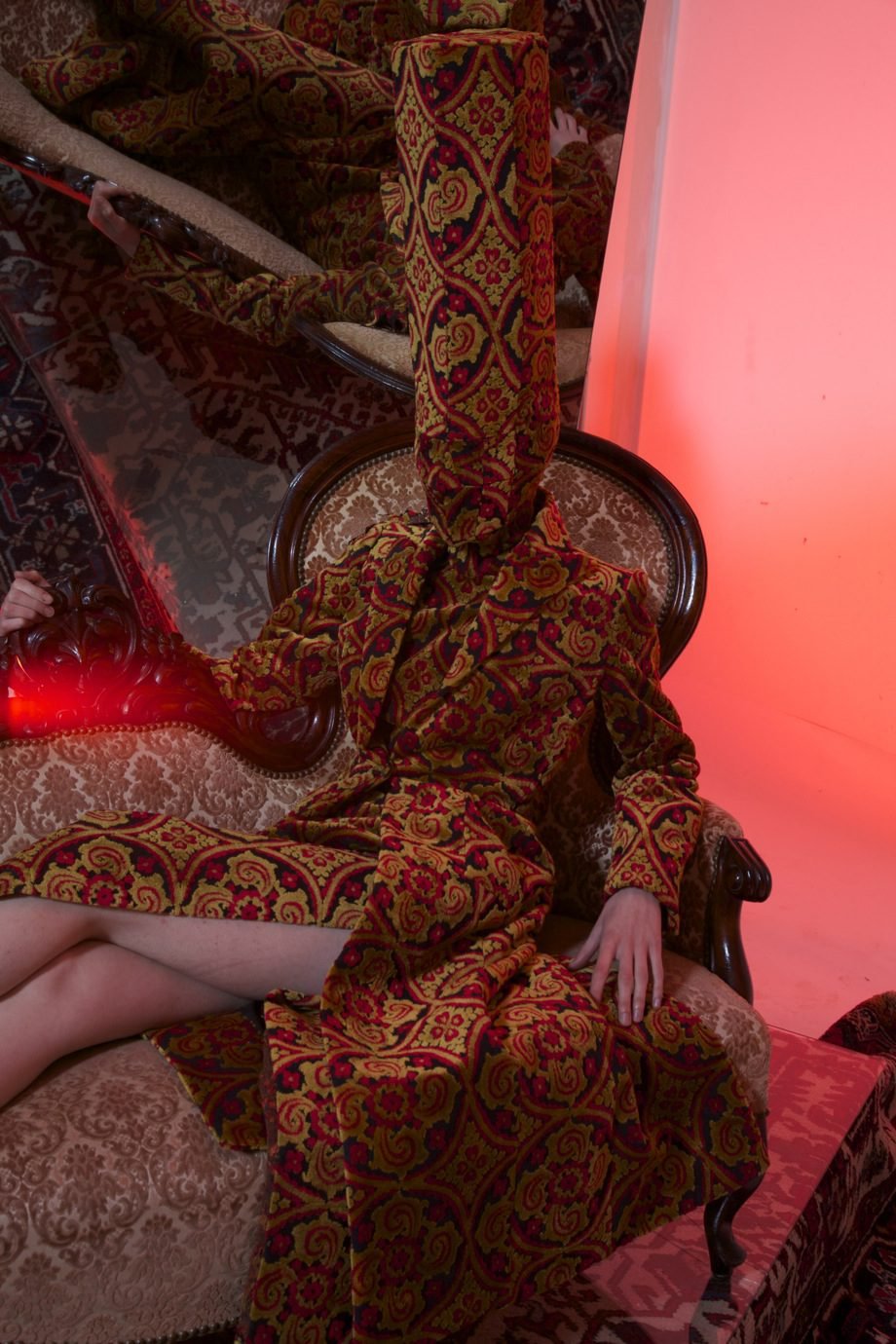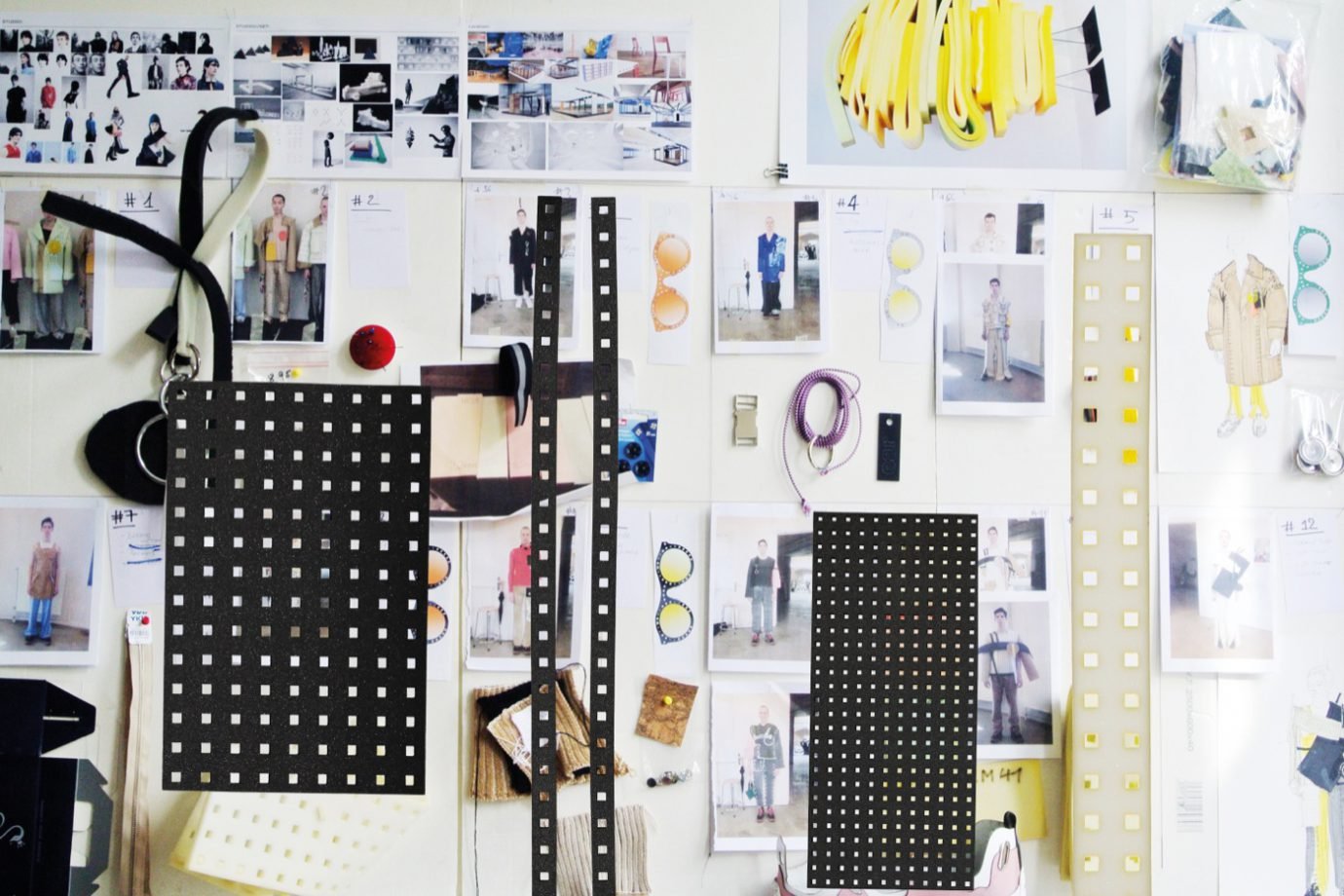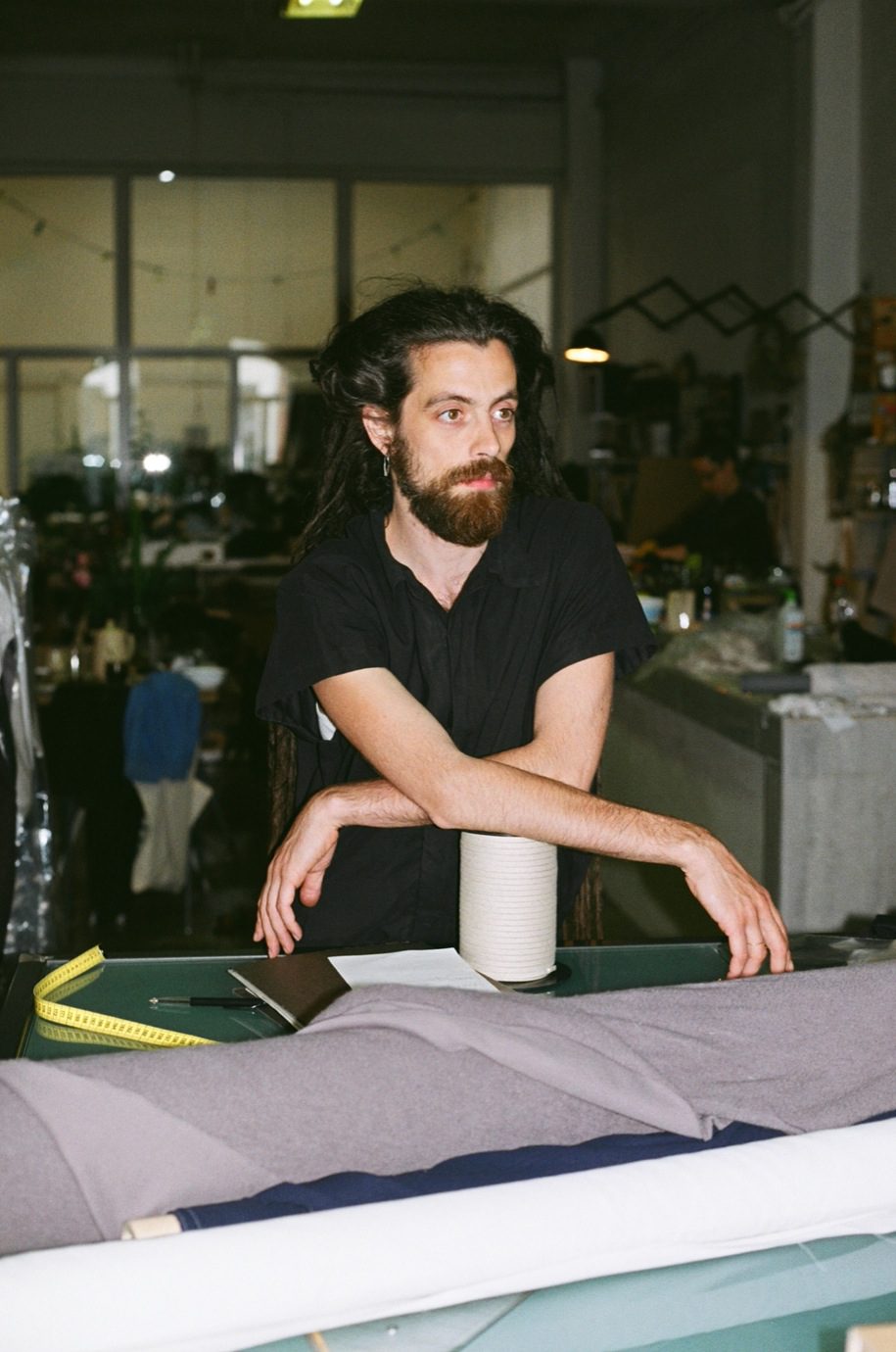Bruloot, who founded the Antwerp-based shoe store Coccodrillo in 1984, has curated the upcoming shoe exhibition Foot Print, The Tracks of Shoes in Fashion which will open at the MoMu on Thursday 3rd of September. Many real-life Pinterest mood boards with printed images attached to each category stand just outside of the room where our conversation takes place. Asked about which categories dominate the exhibition, Geert explains: “As seven months is really a very short for preparing this kind of exhibition, we’ve tried to work with what we could get a hold of.
Technically we needed a longer period for chasing loans from the big museums, and conceptually we had to work hard to convince the fashion houses that their past is equally important as the commercial values they are aiming for today. With more time for profound research, we would have gone through the great historical collections of the world, and would have been able to select older historical and indigenous footwear that has inspired contemporary shoe design.
Geert Bruloot does not sit calmly when he speaks. His hands make great gestures when he talks about the Belgian economy, slavery, or the essence of having a philosophy when deciding to make a career out of fashion design. He switches off his phone when it rings with the same enthusiastic energy as with which he chats. It’s present even when he, every once in a while, pours himself a glass of water, sitting in the top-floor offices of the ModeMuseum in Antwerp, which also houses the Flanders Fashion Institute and the Fashion Department of the Royal Academy of Art.
With impossible-to-walk-on heels scattered throughout, his moodboards don’t necessarily limit themselves to ‘wearability’. Not that that was the focus, anyhow. “Wearability has never been our first reference. From when we started our shoe store 32 years ago, creativity has always been our goal. When emotion, invention, creation, craft and fantasy can go together with technical development, construction and anatomical research, great fashion creations are born! Shoes can have many connotations: religion, fetish, war, survival, seduction, gender, status, dance, rebellion…”
“I THINK THERE’S A BIT OF AN URGE TODAY TO BECOME A STAR VERY SOON.”
But before getting ahead of himself and disclosing too much information about Antwerp’s newest hot ticket — after the Dries van Noten’s retrospective exhibition Inspirations broke visitor records — he looks into a different history, close to his heart, and tells us about how he met the Antwerp Six designers and their coming to prominence.
Started from the bottom now we…
In the 80’s, there was Dirk van Saene’s store in Antwerp, called Beauties and Heroes, which is where I met Dirk and his partner Walter van Beirendonck. A few months later, Martin Margiela came into my store, Coccodrillo, which was before he went to work for Jean Paul Gaultier. He said that he had a shoe collection and asked if we wanted to sell it. So I went to his flat to see it, and it was amazing – I bought all of it. Ann Demeulemeester actually came into the store to buy these shoes. A year after that, I met Dries van Noten because I was at that moment also dressing windows for other stores. He mentioned the Golden Spindle contest, and said that they needed somebody to do the scenography and the coordination with the music. He asked me if I wanted to do it. Although I had never done this before, I agreed and made a decor. Dirk Bikkembergs won the contest, whom I met and got into conversation with. “Your shoes are amazing and we want to sell them!” I told him. Dirk said that they weren’t produced, so he went and saw his manufacturer who said: “Ok, we’ll make them but Geert has to distribute them because we have no agent.” So I said, “Ok let’s do this, then.”
“DON’T DO IT THE TYPICAL WAY ANYMORE. DON’T GO TO PARIS WITH THE SHOWROOM, BECAUSE IT WILL NOT WORK. IT’S TOO MUCH. THINK ABOUT A NEW WAY.”
During two seasons we were travelling to Holland, Belgium, Luxembourg. All the stores in that time were selling slim mens’ shoes. And Dirk’s shoes were sturdy. We’re talking mid-’80s. Whenever I came into a shoe store and opened a box, it was like poison [for the buyers] and everybody went, “no no no no no! you cannot sell this!” But we were selling them like hotcakes. I was convinced everything was good. After two seasons we went to Tokyo because our trip was paid by the government. I stayed there with the designers and realised the potential of what I saw. I thought, “this is gold”. These designers were so talented, not only in their collections but also in the way they presented themselves: their invitations, the way they built up the stands, the way they built up their shows. I felt everything was there. But you have to see it back in time. We’re talking Montana, Gaultier, Alaia, Comme des Garçons, Yamamoto, Miyake and Kenzo: those were the designers of the moment. Stephen Sprouse was a bit up and down, and then there was Vivienne Westwood— winning and losing. Before that, ready-to-wear fashion was a secondary part of the couture houses. Fashion became closer to reality, which meant that you didn’t have to open a couture house before you could make fashion. Then the Japanese came and they started deconstructing fashion. No more glamour shows with top models, but just models from the street walking between the chairs. It also became logistically and financially more closer to us. Then we had the Belgians; I realised what was happening there, and in that time London was big. You had Vivienne Westwood, Katherine Hamnett, Body Map, Culture Shock and Galliano was just starting out.. So I said, “I’m fed up travelling with your shoes in the countryside. Please, I have one solution: let’s go to London’s British designers show.”
Going global
Dirk said: “Ok, let’s see what we can do”. And then I thought: “Only shoes? No way. I need clothes.” I went to see Walter and told him about our plan. I asked if he wanted to make a collection: “Just join me and we’ll make a stand together.” He said OK. I was already working with Dries at that time… I had helped him to start up by doing the graphics for his brand; the catalogues; the showrooms, the invitations. He heard of it and went: “hey, why can’t I come as well?” Then I had the idea: of course, they all have to come. We all united, rented a truck and went to London to show the collections, and that’s where it started.
In London, all the designers were on the first floor of the building, and we were on the top floor next to the wedding gowns. All the buyers from Barneys, Bergdorf, etc. never went to the second floor — we noticed this on the first day. The next day we made flyers and started distributing them on the first floor, and sometime around mid afternoon that day, we suddenly had Barney’s there. These were the first orders we had. An hour later it was full of press, cameras around: ‘where did you come from? it’s like you came from another planet, we never heard of you! this is so fantastic!’ As they could not pronounce our names, they just started calling us The Antwerp Six.
“ IT FELT LIKE A POP GROUP SPLITTING UP.”
The next season we were invited by the Pitti organisation to show at Pitti Trend in Florence, but we didn’t have money to go. We often sat together at Dries’ place and Walter was always a box of ideas for all these kinds of things and he said: “Why don’t we rent a mobile home?” You know, those trucks you can live in. The day after, we rented two of them which we charged with all the furniture, the collections, the mannequins, the tents, the designers, and we drove through the Alps to Florence. We went and stayed on a camping during that period and started selling there. This was possible back then; you always have to see it in its context.
I think there’s a bit of an urge today to become a star very soon. I can feel this with the students [of the Antwerp Fashion Academy]. But, the Antwerp Six didn’t have that. They had this dream and this healthy naivety to believe in it. They knew that one day they would make it, but that was it. They were sure that what they were doing was good. It went much faster than they had foreseen. And when we became too important in London, the British Fashion Council chased us out. That’s what made us decide to go to Paris.
The British Fashion Council is funded by the British fashion industry, and they thought we were profiting from their system. It was different with Paris, because Paris has always said: we want to be the fashion capital of the world: welcome to the Japanese, Belgians, Arabs. That was the big change. We went to Paris and showed twice as a group, but then Dirk Bikkembergs only did menswear so he had to split to do the show for men; Dries needed a bigger show because he was booming, and so the whole group split up. It felt like a pop group splitting up.
Acting as a collective creates opportunities
“ONE AMERICAN JOURNALIST WROTE: WHAT’S IN THE TAP WATER IN ANTWERP? IT REMAINED AN ENIGMA.”
Since it started, so many people have been asking us the same question: what’s up with these Six? One American journalist wrote: what’s in the tap water in Antwerp? It remained an enigma. Why and how? It is very difficult to explain. I think it has to do with the political situation in the 80s, when the world was changing very fast and we became a global community; where the identity of a small country suddenly saw the possibility to become one of the players in this global story. We saw the future.
When we started with this group of Belgian designers, they were not doing everything only by themselves. There was also this whole entourage of graphic designers, make-up artists, photographers and models. There was no hierarchy. We were working together to fulfil this dream. We were convinced we could make it. But you have to see it back in time. Today it would be much more difficult because of this global playground. Now you can have a next future star designer from Greenland, or from the South of America. They can come from everywhere because the world has opened itself, by the way of the Internet, for instance. Communication — not only word but also image — flies around the world all the time. To start up as a young designer or as a group of designers would now be much more difficult, and it needs a total different approach. I think starting up as we have done in the 80s has become impossible.
“THERE WAS NO HIERARCHY. WE WERE WORKING TOGETHER TO FULFIL THIS DREAM. WE WERE CONVINCED WE COULD MAKE IT.”
Moving forward, Geert’s advice for young designers
Don’t do it the typical way anymore. Don’t go to Paris with the showroom, because it will not work. It’s too much. Think about a new way.
A few months ago I walked in New York and thought: there are too many clothes, and there are not enough people to wear them all. When you have 10 stores, 8 of them sell fashion. Paris and Amsterdam are the same. Where can you buy your groceries, and where are the furniture or ironwear stores? Do we have to sell clothing in a store? We don’t know. Maybe young designers don’t need stores anymore? The future is open at the moment.
The classic multi-brand store as we know it is disappearing; it has no reason to exist anymore. The big brands don’t want to work with them; they are interested in stores that represent their philosophy and their image, and reinterpret it. If you see a store like Colette, it adds another value to the image of Fendi. The way it’s displayed; the selection, and the way it’s sold gives a different aspect than how it’s displayed and sold in the Fendi store. It adds to the image and it adds to the standing of a brand. The multi brand fashion store has to be very creative with all of this.
The ease of buying and selling in the 80s and 90s has disappeared and has been replaced by something exciting, on a much faster speed. There are all these young people who make new creations and systems, and we have to discover them, try to pick them up, and present them or give them a place in our work.
“WE CANNOT FAKE ANYMORE. IT HAS TO BECOME A VERY HONEST AND TRANSPARENT BUSINESS.”
It means that the task, or the definition, of the multi brand store has changed completely. Before, it was just a place where you find all these brands, and that was it. But now, they do the work that editors did for the magazines in the past. And, stores like Colette work even more like a magazine as they rent out their windows as advertising. So they’re not only editors, but they also do advertising.
It’s an interesting period. This is how we live it after 35 years and I don’t mind to change it again, because it’s exciting! The big challenge for us [retailers] is how to attract the young people (who are aware that everything has to change) into a store, selling shoes in a classic way. The shoes are still produced, packaged, used, and communicated in a classic way. I can imagine being a young girl or guy thinking ‘oh fuck off with this system! but… I want these shoes’. We cannot fake anymore. It has to become a very honest and transparent business.”
“TO START UP AS A YOUNG DESIGNER OR AS A GROUP OF DESIGNERS WOULD NOW BE MUCH MORE DIFFICULT, AND IT NEEDS A TOTAL DIFFERENT APPROACH.”
On the global fashion system and sustainability
I think the whole fashion system has to change. It has no possibility to survive the way it is now. There are too many clothes; there is too much pressure on the environment (the waste is gigantic); the slavery that supports it has to be stopped. I love cheap clothes because it means that the elitism of fashion is gone, people with little money can afford fashion now, but on the other hand it supports modern slavery, so we cannot accept this anymore. All these ethics have to change about fashion. I think we have to go back to ‘less but better’. We’re missing values and emotion. When you go to see a fashion show, it’s all about products: selling bags, sunglasses, shoes, gloves — but where is the emotion? I think not only fashion but also in politics, emotion is coming back. I think it’s the challenge now for young people to find a new system for fashion, for living together in totality. I can understand the big houses, they have built up a big structure on producing and making money, and you cannot just cut and say ‘we’re gonna kick you out and we do something small’. It doesn’t work like this, just like you cannot eliminate the car industry. We all know that cars are bad for the environment, but you cannot just cut it out. I think a new system has to be invented and the big companies should adapt to it, or help realising it. Fashion designers have to rethink the ways in which they will design fashion.
On the importance of pre-collections and the over-exposure of clothes
Fashion has created the pre-collections and they are easiest for the stores to work with, because they are less visible on the internet; the delivery is early and we can make the customer discover the product in the store. It’s much more diversified. The fashion collection is the message of the show, while the pre-collection has many more sides. It’s been like this for 20 years. When pieces has been in a campaign, our customers didn’t want it anymore, and it’s still like that today. The fashion comes much later, so the time for selling it is much shorter. A shoe that has been seen in the campaigns six months before feels already worn when placed in the shop. It’s old already. That’s where the system is wrong.
“THE TIME OF DOING WHATEVER IS OVER. THERE IS TOO MUCH WHATEVER.“
Normally, we should think that the fashion part comes first, but if you go to the shows now in September for next winter, it means they have to deliver it in November or the end of October, which is almost impossible. This is one thing that’s wrong. The other thing is how the systems in the different price levels is killing the fashion system as we know it. One of the most important turn-overs for Prada stores are the outlet stores. The real price becomes the outlet price for many customers. We’re at the point where customers say: this is overpriced. The system has to change.
Attending fashion shows today
For the past ten years of going to fashion shows, I’m rarely excited, because I have the feeling I’ve seen it all. We cannot possibly have seen it all. I think the art or all forms of creation should always trigger some part of our sensibilities, but in fashion I’m not excited at all at the moment.
I’m a fan of JW Anderson — his work is very interesting because he thinks out of the box in fashion, which attracts me. I don’t know yet, but it’s interesting to see Simone Rocha, but I don’t know her attitude towards fashion in general, her philosophy.
“I THINK WE HAVE TO GO BACK TO ‘LESS BUT BETTER’. WE’RE MISSING VALUES AND EMOTION.”
Dries Van Noten and staying true to your design philosophy
Overexposure was something he never allowed with his collections. He never did advertising. All his stores look different. You can see his fingerprint, but they’re all different. And he still tries to bring emotion; you still see people crying at his shows. He’s booming, and the only thing he does is slowing it down all the time. He doesn’t want to become the new Armani. He wants to stay as he is. He wants to grow, yes, but his philosophy has to remain. The philosophy of a fashion designer is very important. Martin Margiela has explained that what he did was a proposition for fashion. He did not want to rule fashion. He said, “What I do is my proposition.” Sometimes there was no show, and he would say, “it’s because I didn’t invent anything this season, I had no inspiration, so no show this season.” Then after twenty years he stopped his work as a fashion designer because he thought that his time was over and he had become old-fashioned. That’s a philosophy and that’s important. You can translate a philosophy into a message, and the customer is sensitive to the message. With J.W. Anderson I can already feel a philosophy. The time of doing whatever is over. There is too much whatever. I went to the fashion show of the academy last week and thought ‘come on! what ever’. It’s beautiful or interesting for my references, but what is the meaning of it? Does it make sense?
There are not enough jobs for all of them. That’s why I think if you want to stand out you need to have a healthy contemporary philosophical approach on the metier you’re doing, with whatever job you’re doing. If you want to become a politician, a scientist, you need this: what am I doing? what am I working at? I think that is a very important factor in evolution today, to make a difference and to make things move forward. Otherwise we’ll invent new things that just create more waste.

